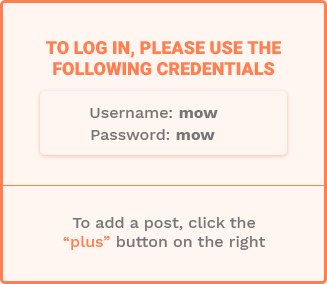Now Reading: Your Guide to Successful Human Resources Management
-
01
Your Guide to Successful Human Resources Management
Your Guide to Successful Human Resources Management

Your Guide to Successful Human Resources Management

Human resources (HR) is more than just hiring and paperwork. It’s the heart of making a company succeed. This guide shows how HR strategies create a great company culture, boost productivity, and keep teams focused on goals. Find out how leading companies cut down on turnover, attract the best talent, and stay up-to-date in a fast-changing world.
Learn why modern HR practices are key for growing businesses. Discover why old methods might be slowing yours down. From finding the right people to keeping them, this article gives leaders the tools to turn workforce challenges into strengths.
Key Takeaways
- HR management directly impacts employee satisfaction and business profitability.
- Data-driven HR decisions improve hiring quality and reduce costs.
- Modern HR requires balancing legal compliance with innovative talent development.
- Effective onboarding and training programs increase long-term employee retention.
- Strategic HR aligns workforce goals with company vision for sustained growth.
Understanding the Fundamentals of Human Resources
Human Resources (HR) is key to a company’s success. It shapes how people work together and how a company finds and keeps talent. HR has moved from just handling paperwork to making big decisions that help a company grow.
“HR’s role has shifted from compliance to culture-building and innovation,” noted a 2023 report by the Society for Human Resource Management (SHRM).
The Evolution of HR in Modern Business
HR used to just handle pay, benefits, and following the law. Now, HR leaders work with top bosses to set goals. Companies like Google and Microsoft use HR tech to make work better for everyone.
Core Functions and Responsibilities
- Recruitment: Finding the best people with smart strategies
- Employee Relations: Helping teams work well together
- Compensation Management: Making sure pay is fair and competitive
- Compliance: Making sure the company follows all laws
Strategic Value of HR in Organizations
HR teams now use data to figure out who they need. For example, they use analytics to spot skills gaps and plan training. Companies like Amazon and Salesforce use HR to innovate and keep employees happy.
Good HR practices cut down on turnover and boost work quality. A solid HR plan helps a company find, grow, and keep the right people for the future.
Building Effective Talent Acquisition Strategies
Effective talent acquisition and recruitment need a mix of strategy and action. Companies must match their hiring processes with their goals. This way, they can build strong talent pipelines. Here’s how to create recruitment practices that drive success.
Developing a Comprehensive Recruitment Plan
Begin by setting clear goals for talent acquisition. Match job needs with company goals. Use employer branding to draw in the best candidates. Key steps include:
- Identify skill gaps through workforce analytics
- Create job descriptions that reflect company culture
- Leverage both passive and active candidate pools
Optimizing the Candidate Screening Process
Efficient screening cuts down hiring time. Use AI to scan resumes and assess skills. Tools like pre-employment tests and video interviews make evaluations easier.
Conducting Impactful Interviews
“Structured interviews reduce bias and improve accuracy by 75% compared to unstructured methods.” – Society for Human Resource Management (SHRM)
Use behavioral questions to guess how well someone will do the job. Example frameworks include:
| Interview Type | Key Focus |
|---|---|
| Behavioral Interviews | Past experiences predicting future behavior |
| Scenario-based | Problem-solving under simulated work conditions |
Making Data-Driven Hiring Decisions
Keep track of metrics like hiring time and how long people stay. Use analytics to spot trends in who succeeds. Data shows companies using predictive analytics boost hire quality by 40% (LinkedIn 2023).
Implementing Successful Onboarding Programs
Good onboarding programs are key to getting new employees on the same page as the company’s goals. Human resources teams need to create clear, engaging processes. Training and development during this time are crucial for long-term success.
- Pre-boarding: Share company policies, team introductions, and login details before the first day.
- First-day essentials: Orient new hires with team introductions, workspace tours, and system access.
- Role-specific training: Deliver hands-on sessions on tools, workflows, and performance expectations.
- Ongoing support: Schedule weekly check-ins and assign mentors to address questions.
Measuring success is important. Look at retention rates and how quickly new employees start doing their job well. Human resources can use learning management systems (LMS) to track progress and improve training. Technology also helps share documents and get feedback, keeping the process consistent.
Remote teams need special plans. Virtual onboarding uses video and interactive guides to feel like you’re there. Activities and shared goals help everyone feel part of the team. Keeping communication open is key for remote teams.
Companies that really invest in onboarding see better retention and faster skill growth. Training that matches business goals helps new hires contribute quickly.
Training and Development Best Practices
Effective training and development programs are key to HR success. They help drive the success of the organization. Here’s how to create a system that meets business goals and helps employees grow.
| Method | Description | Purpose |
|---|---|---|
| Surveys | Employee feedback to pinpoint skill deficiencies | Align training with real-world challenges |
| Performance Reviews | Link job performance data to training priorities | Target improvement areas |
Next, design programs using these principles:
- Blended learning: Mix online courses with hands-on workshops
- Microlearning: Short modules for busy schedules
- Feedback loops: Regular updates based on participant input
Track success with measurable outcomes:
- ROI calculations comparing costs to productivity gains
- Pre- and post-training skill assessments
- Long-term retention rates of trained employees
Continuous growth needs ongoing support. Top companies use mentorship and personalized learning paths. This keeps skills up to date. As one expert says:
“Training isn’t a one-time event—it’s a cycle of learning and application.”
HR teams must integrate these practices. This ensures training initiatives bring real benefits and help with career growth. By using data and engaging employees, organizations can build a culture of lifelong learning.
Employee Relations and Engagement
Employee relations and engagement are key to a company’s success. Human resources teams create programs to build strong bonds between employees and the company. These programs help everyone work together towards common goals.
By focusing on these areas, companies can increase loyalty and productivity. They also see less turnover.
Building a Positive Workplace Culture
Leadership plays a big role in setting the workplace culture. They use regular communication, recognition, and team activities to build trust. For instance:
- Open-door policies encourage feedback
- Recognition programs reward contributions visibly
- Employee resource groups promote inclusivity
Conflict Resolution Strategies
Quickly solving disputes helps avoid bigger problems. Effective ways include:
| Strategy | Description |
|---|---|
| Mediation | Neutral third-party facilitation for resolving disputes |
| Training | Workshops on communication and collaboration skills |
| Feedback loops | Anonymous surveys to identify recurring issues |
Promoting Work-Life Balance
Initiatives for work-life balance help reduce burnout and improve well-being. Effective practices include:
- Flexible scheduling options
- Mental health days and EAPs (employee assistance programs)
- Wellness stipends for fitness or childcare
Studies show companies with strong employee relations have 17% higher productivity (SHRM, 2023). These programs need constant checks through surveys and retention metrics. This ensures they meet the company’s goals.
Compensation and Benefits Administration
Good benefits administration and hr plans make employees happy and keep them around. Companies need to match market rates with fairness to offer great deals.

Creating fair salaries starts with understanding each job’s worth. HR teams look at skills and tasks needed. They also check what others pay to make sure it’s fair.
Tools like pay grade systems help keep things even across the company.
Salary Structures for Fair Pay
- Job evaluation: Assess role complexity and value
- Market analysis: Compare with competitors’ pay data
- Pay grades: Establish tiers for equitable compensation
Benefits Packages That Engage
Good benefits include health care, retirement plans, and time off. It’s important to follow laws like the Affordable Care Act. Options like flexible benefits help keep costs down while still being appealing.
| Benefit Type | Key Features | Strategic Impact |
|---|---|---|
| Health Insurance | Dental, vision, and prescription coverage | Reduces employee stress and absenteeism |
| Retirement Plans | 401(k) matching and pension options | Encourages long-term employee commitment |
| Wellness Programs | Subsidized gym memberships, mental health support | Improves productivity and morale |
Incentives That Motivate
“A 2023 study shows 78% of employees prioritize benefits over salary increases.”
Things like bonuses, stock options, and working from home make employees feel valued. Regular checks make sure these perks match the company’s goals.
Performance Management Systems
Effective performance management is more than just annual reviews. Today’s systems focus on ongoing feedback and aligning personal goals with company goals. Tools like OKRs and SMART criteria help set clear, measurable targets.
Regular meetings and coaching replace old annual reviews. This approach encourages growth and holds people accountable.
- OKRs: Define ambitious goals with quantifiable outcomes
- SMART criteria: Ensure goals are Specific, Measurable, Achievable, Relevant, Time-bound
- Feedback loops: Weekly or monthly 1:1 meetings
Technology is key in hr technology solutions. Platforms like Workday and Lattice make tracking goals and giving feedback easier. They also offer insights through data analytics.
These tools help managers spot trends, address issues, and track employee progress accurately.
| Metric | Example |
|---|---|
| Employee growth rate | 20% increase in skill mastery |
| Feedback frequency | Quarterly 360-degree reviews |
| Development plans | Personalized learning paths |
“Continuous feedback drives performance like no annual review ever could.”
Legal rules and calibration ensure fairness. Metrics like engagement scores and retention rates show if the system works. Hybrid work setups need flexible systems that share data in real-time.
Good performance management mixes human insight with tech. It turns data into plans for lasting success.
Leveraging HR Technology for Better Outcomes
Today’s human resources teams use hr technology to make things easier and more efficient. These tools help companies work better, make fewer mistakes, and focus on big goals. By using digital solutions, businesses can keep their human resources practices up to date with the changing needs of their workforce.
Essential HR Software Solutions
Systems like Workday or SAP SuccessFactors keep all employee information in one place. Recruitment tools, such as Greenhouse, make it easier to track candidates. Learning management systems (LMS) like Cornerstone OnDemand make training easier to manage. These tools help manage all parts of the talent lifecycle.

Data Analytics in HR Decision Making
Data analytics changes how human resources teams make decisions. It lets them predict when employees might leave and track how engaged they are. For example, AI tools like Visier help analyze workforce data to improve retention strategies. This way, metrics like how long it takes to hire someone or the return on training investments become useful.
Automating Administrative Tasks
- Automated payroll systems cut down on mistakes.
- Onboarding platforms like HelloWorld help new employees with self-service portals.
- Chatbots handle simple questions, so HR can focus on important tasks.
Getting these tools up and running needs careful planning. It’s important to keep employee data safe and to help teams adjust to new systems. Companies that use these tools see their processes speed up by 30% and their employees are happier.
Conclusion
Effective human resources management is all about combining talent acquisition, employee relations, and performance management. These key areas help organizations succeed by aligning their workforce strategies with business goals. As work environments change, it’s important to focus on personalized experiences and make decisions based on data.
HR teams can use analytics and automation to keep up with trends like hybrid work and remote teams. This helps them adapt quickly to new situations.
It’s crucial for companies to keep checking their talent acquisition and employee relations strategies. Performance management systems need to change too, using data to boost retention and engagement. By doing this, HR can improve the company culture, increase productivity, and ensure long-term success.
New technologies and data-driven methods help HR teams stay ahead. They can predict challenges, encourage teamwork, and keep the company competitive. By focusing on these areas, HR can drive business success in a fast-changing world.
FAQ
Q: What are the core functions of human resources?
A: Human resources handle many key tasks. These include finding and hiring employees, managing their work, and training them. They also deal with benefits and use technology to help with these tasks. All these activities help keep the workplace running smoothly and make sure employees are happy.
Q: How can organizations improve their recruitment strategies?
A: To improve recruitment, companies should plan carefully. They should screen candidates well, conduct meaningful interviews, and make hiring choices based on data. This way, they can find the right people who fit with the company’s culture and goals.
Q: What is the importance of employee onboarding programs?
A: Onboarding programs are very important. They help new employees get settled quickly and work well sooner. They also help keep employees from leaving. A good onboarding program includes getting ready before starting, specific training, and ongoing support.
Q: How can companies assess their training needs?
A: To figure out training needs, companies should do a detailed assessment. This looks at individual, team, and company needs. It helps find out where skills are lacking and what training is needed to meet goals and employee dreams.
Q: What strategies can be used for building a positive workplace culture?
A: Creating a positive culture involves good communication and leadership. It also means recognizing employees and building a sense of community. Making sure work and personal life balance and solving conflicts also help create a friendly work environment.
Q: How should organizations manage compensation and benefits?
A: Managing pay and benefits means offering fair salaries and good benefits packages. It’s important to make sure pay is fair within the company and competitive outside. Companies must also follow the law when setting up these programs.
Q: What modern approaches exist in performance management?
A: Today, performance management focuses on ongoing feedback, not just yearly reviews. It uses goals like OKRs and SMART criteria. It’s about having open conversations and using technology to help with development.
Q: How can HR technology improve efficiency in human resources management?
A: HR tech makes things more efficient by automating tasks and using data for better decisions. It helps streamline work and use analytics to support goals. This makes HR more effective and improves the work experience for employees.






























